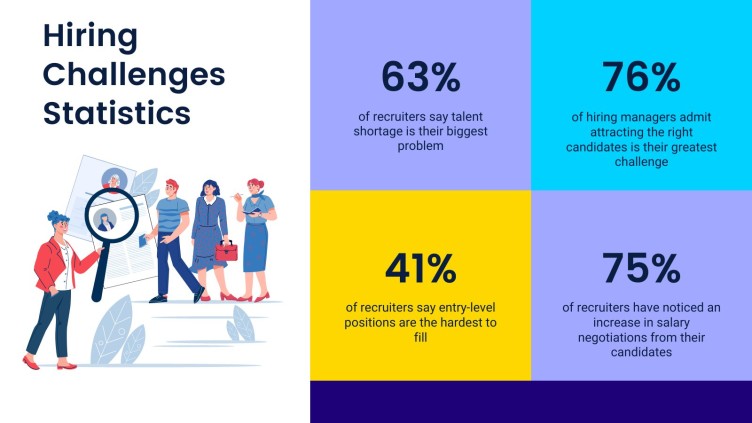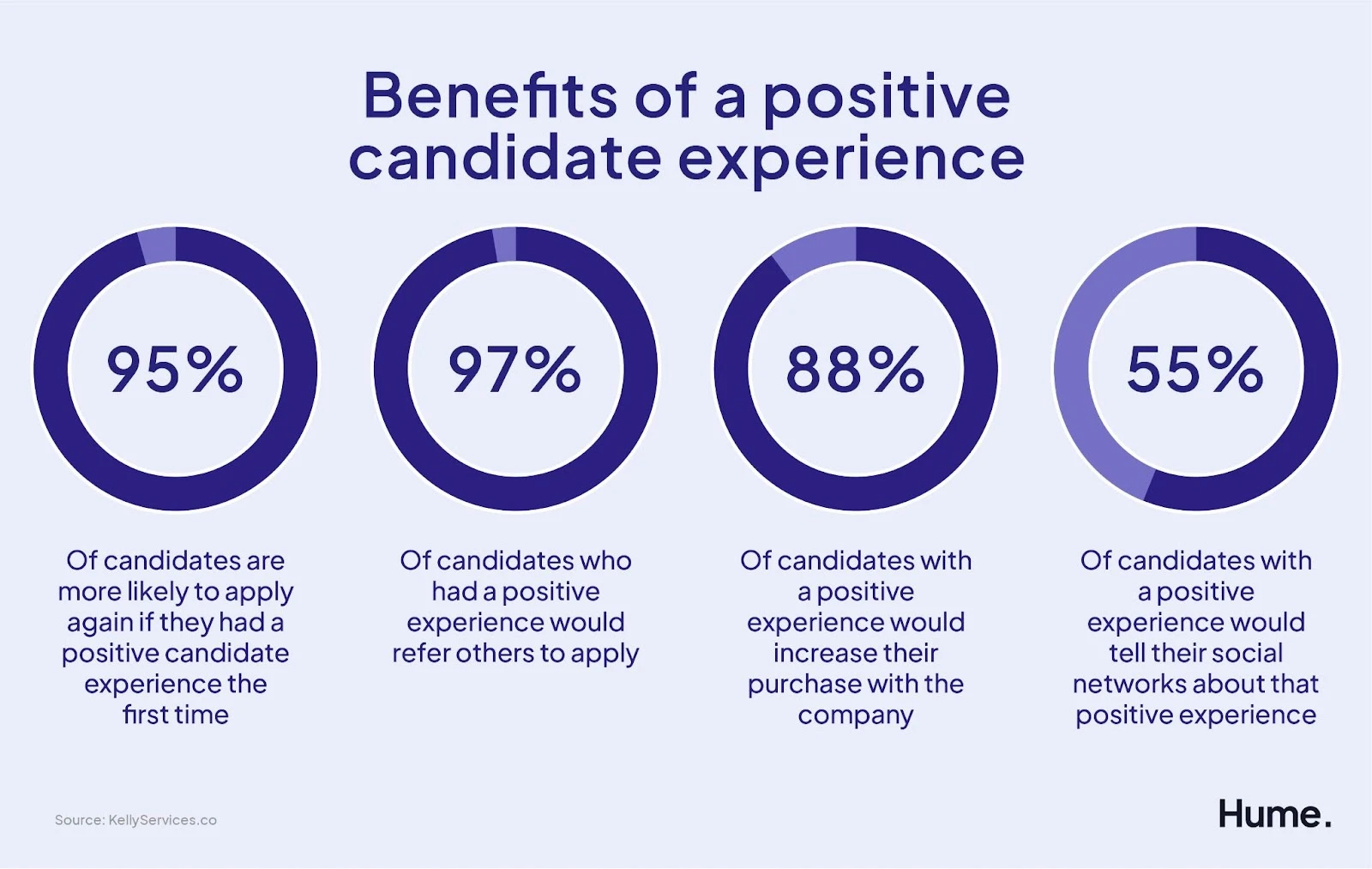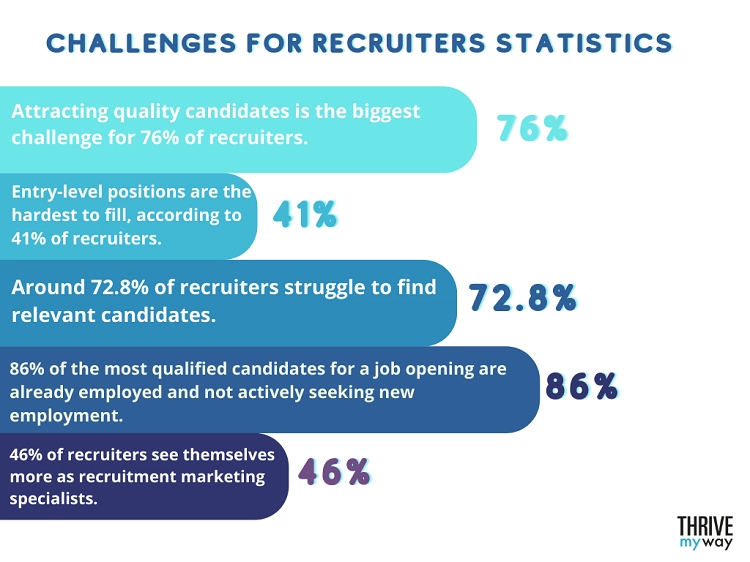Agile Recruiting: Why Traditional Hiring Processes No Longer Apply

And with job market dynamics changing every second, traditional hiring processes are becoming increasingly ineffective (especially if you’re rushing to hire many people!). As a result, many businesses are turning to agile recruiting to shift their hiring process into top gear.
If this is your first time hearing about agile recruiting, don’t worry; with only 50% of companies measuring their recruiting effectiveness, you’re not alone. In this article, we’ll take a deep dive into agile recruiting, exploring its benefits and how it can help streamline your hiring process and discover the best candidates for your team. Let’s get started!
What is agile recruiting?
Agile recruiting takes its cue fromagile developmentand offers afresh approach to the traditional hiring process. It aims to identify and hire top talent quickly and efficiently while adapting to changing business needs and market conditions.
Unlike traditional hiring methods, which can be slow and rigid, agile recruiting prides itself onstreamlining processes and boosting productivity. It emphasizes speed, flexibility, and above all else, collaboration.
If you’re wondering about the main difference between the two, we can sum it up in one word:communication. In traditional hiring processes,recruiters and hiring managers typically work separately, with recruiters simply giving resumes to hiring managers,and that’s it!

Image sourced from linkedin.com
Whereas in agile recruiting,the two sides work closely together. They both identify the positions to fill, with regular check-ins and adjustments to ensure the process stays on track. And as83% of candidates believe the hiring experience would improve with a clear timeline in place, agile recruiting is a step in the right direction.
The benefits of agile recruiting
By adopting agile recruiting practices, you can enjoy an amazing range of benefits, including:
- Faster time-to-hire
With the agile methodology, streamlining communication and collaboration among team members is easy, allowing forquick and effective decision-making. Whereas traditional hiring processes are slow and time-consuming, agile recruiting secures top talent before they accept offers elsewhere.
One way to make the process even more efficient is by using online tools for document management and format conversion to enable collaboration and commenting on resumes. For example, you can easily convert your PDF files to Word documents using applications like https://www.pdfplatform.com/convert, making it fully editable without any loss of info.
- Continuous feedback
In even more of a departure from traditional methods, where hiring managers aren’t aware of candidates until after the screening period, agile recruiting allows recruiters torequest and collect feedbackfrom hiring managers at any time of the process (and vice-versa).
This flexibility and transparency help companies avoid wasting time and resources on candidates who aren’t a good fit for the role, particularly asonebad hire can cost companies nearly$15,000 !
- Enhances collaboration
By establishing regular check-ins between recruiters and hiring managers, agile recruiting fosters a sense of unity with two-way communication.
These consistent catch-ups boost collaboration regarding progress, potential obstacles, and goals, which helpssteer everyone towards a shared goal, as they have a deeper understanding of specific requirements.
- Improved candidate satisfaction
As agile recruiting is collaborative, with greater emphasis on a continuous feedback loop with hiring teams, recruiters tend to convert top candidatesperfect for the job role andcompany culture.
Image sourced from gethume.com
Furthermore, providing candidates with regular updates throughout the recruitment process encourages a feeling of appreciation. Also, a positive candidate experience helps maintain their enthusiasm and positivity towards their first day on the job.
Six tips when implementing agile recruiting
Embracing a new direction for your hiring processes can be daunting, but the benefits of agile recruiting are well worth the effort. Here are six tips to help get the ball rolling:
1) Establish a structure
Everything needs structure, whether you’re crafting a hiring roadmap, designing a candidate assessment protocol for a particular role, or, outside of the industry, creating a property lease agreement template or a product development roadmap. Without a clearly defined starting point and an organized, step-by-step process, it’s impossible to maintain control and transparency.
Breaking the recruitment process into bite-sized piecesmakes your structure much more manageable. Each team member should know their specific role in the recruitment process and the outcomes they’re responsible for achieving.
2) Narrow down your KPIs
Collaborate with your team todetermine which key performance indicators (KPIs) to trackand how to record them. For instance, you could set KPIs such as theratio of submitted candidates to hired candidates,job offer acceptance rate, andcost/time per hire.
With this data,identify areas for improvement and make necessary adjustments. Agile recruiting gives you the data to improve so that the process improves.
3) Define job requirements
At the start of your recruitment journey, define the job requirements by identifying what your organization needs (this is where yourcommunication skills matter the most !). Hiring managers shouldclearly outline the role and the necessary qualifications with recruitersfor a successful process.
4) Source candidates effectively
During the candidate sourcing phases, break down the overarching activity into individual tasks, such as crafting job descriptions, collecting contacts, and reaching out to candidates. As you complete each task,share your progress with your teamso you’re all on the same page.
For instance, after deploying recruitment ads, you can review and collect data to determine if you need to refine your outreach strategy.
Image sourced from thrivemyway.com
5) Shortlist your candidates
Review and narrow down candidates as a teamto determine if they meet your recruitment goals. Additionally, scheduling preliminary interviews with shortlisted candidates will provide insight into the success of your structure.
This is the perfect opportunity to change things if your talent pool does not align with your goals.
6) Keep on top of the hiring
Agile recruiting doesn’t end when you hire a candidate; if anything,it’s just getting started. Now that you have a successful applicant, it’s time to review their performance and fit within your organization over time.
This will help you assess the efficiency of your hiring process by reviewing your KPIs so that you can reflect on your hiring process and outcomes to identify any areas for improvement.
Take the next step into agile recruiting
The traditional hiring processes are no longer applicable in the current job market,where agility and flexibility are key. Agile recruiting is the solution to this problem, as it allows companies to quickly adapt to changing job market conditions and hire the best candidates for the role.
Author: Yauhen Zaremba isthe Director of Demand Generation at PandaDoc. He’s been a marketer for 10+ years, and for the last five years, he’s been entirely focused on the electronic signature, proposal, and document management markets. Yauhen has experience speaking at niche conferences where he enjoys sharing his expertise with other curious marketers. And in his spare time, he is an avid fisherman and takes nearly 20 fishing trips every year.



